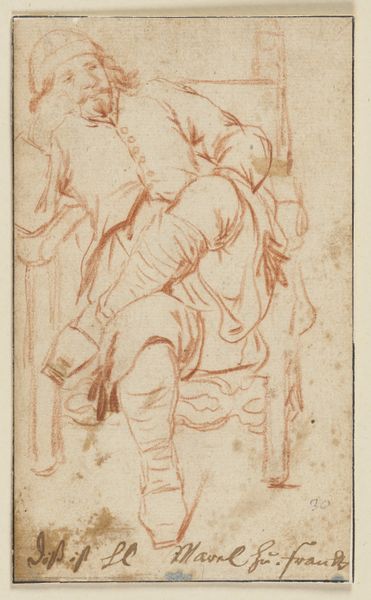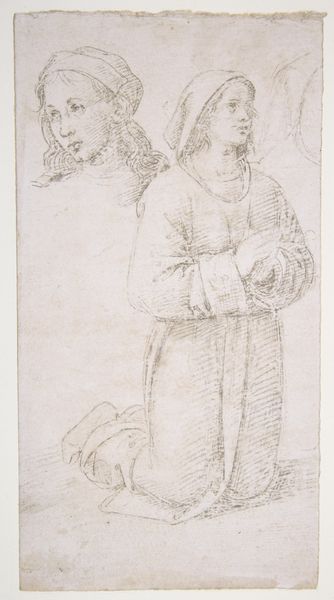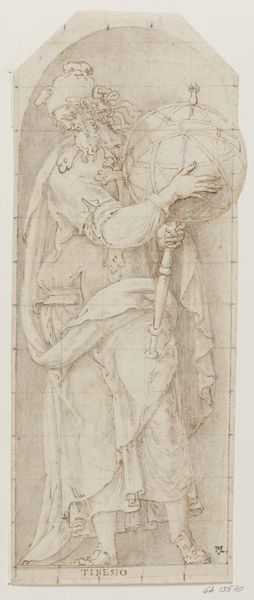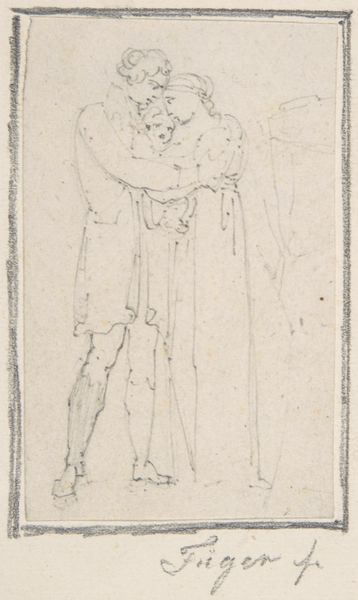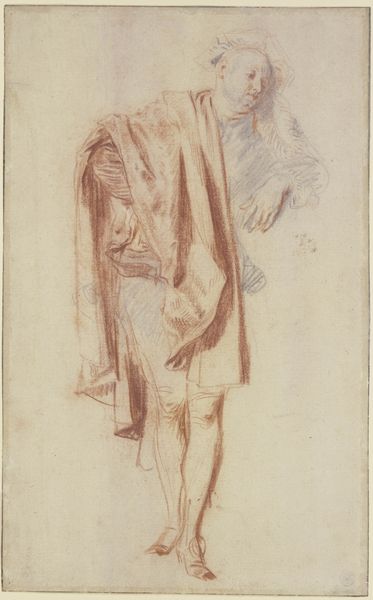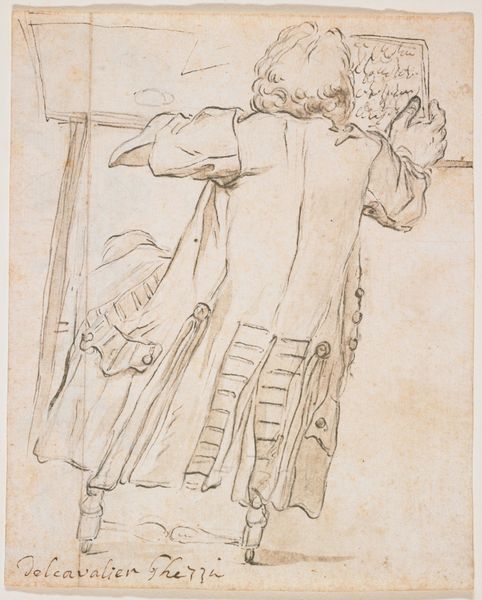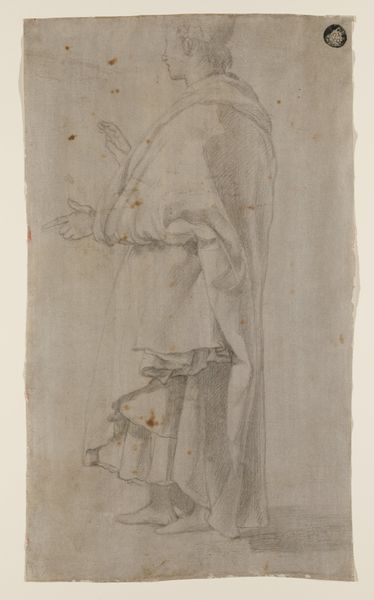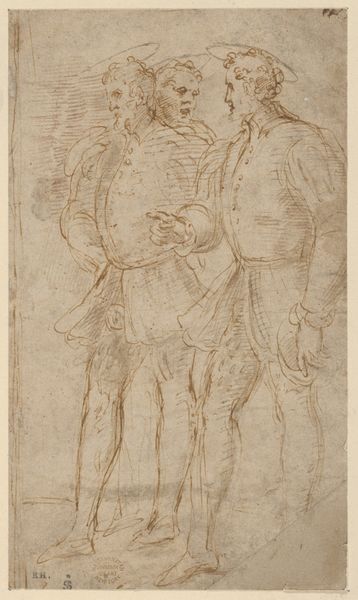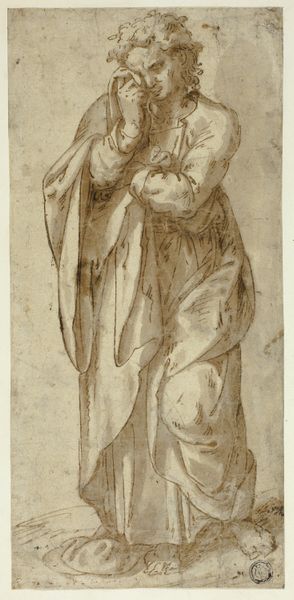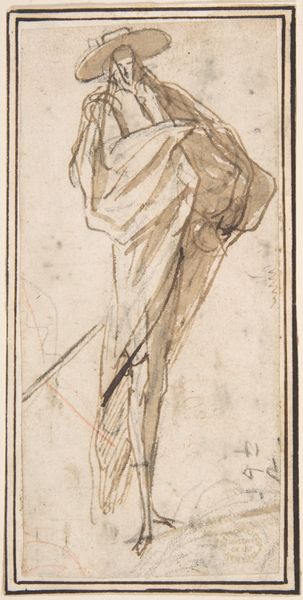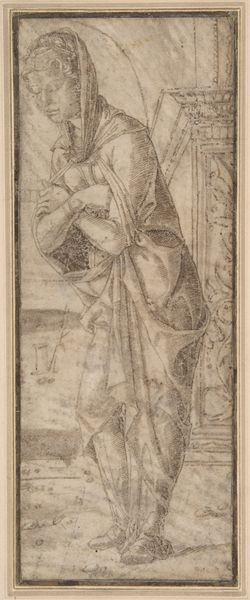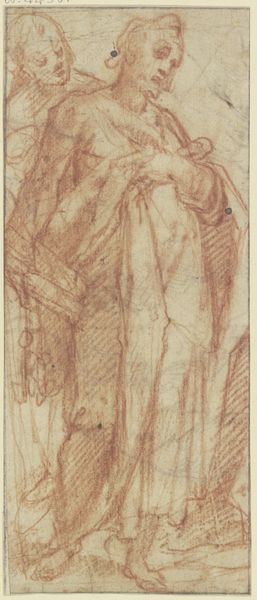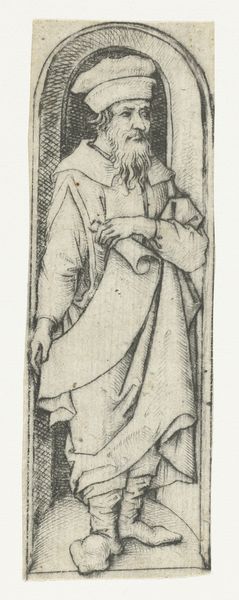
Saint Michael and Saint Giovanni Gualberto (after Andrea del Sarto's Vallombrosa Altarpiece) 1540 - 1609
0:00
0:00
drawing, print, pencil, graphite, pen
#
portrait
#
drawing
# print
#
pencil sketch
#
charcoal drawing
#
figuration
#
11_renaissance
#
pencil
#
graphite
#
pen
#
history-painting
#
italian-renaissance
Dimensions: 7-7/8 x 4-1/8 in. (20 x 10.5 cm)
Copyright: Public Domain
Curator: This drawing, now in the collection of the Metropolitan Museum, is titled "Saint Michael and Saint Giovanni Gualberto," and is attributed to Federico Zuccaro, dating sometime between 1540 and 1609. Editor: My first impression is one of understated power. The tentative pencil and graphite sketch conveys a sense of strength in both figures despite its unfinished nature. You can really sense the pressure of the artist's hand as they build the shadows with cross-hatching. Curator: Zuccaro created this piece using pen, pencil and graphite. These preliminary studies provided models that apprentices could copy as part of their training. The layered chalk beneath feels as if a hidden struggle underlies the overt piety of its subjects. Editor: Yes, the underdrawing gives it such palpable texture. To me, that struggle highlights an interesting tension. St. Michael, usually depicted in triumphant armor, is presented with almost disarming softness. Gualberto carries a tool that represents divine judgment and earthly resources as well. Curator: Michael, ever the protector, appears almost melancholic. The presence of Gualberto reminds us that divine justice, symbolized by the scales, is as much about judgment as it is about fairness and distribution of vital sustenance, suggesting a necessary equilibrium. The softness you mention underscores a certain humility. Editor: Looking closely at Gualberto, the cross-hatching really makes the folds of his monk's robes incredibly tangible. The material nature of devotion is clear here. It seems like Zuccaro had such a careful consideration not just of the aesthetic presentation but the sheer human labor that went into it as well, even for the figures to be considered ‘holy’. Curator: Absolutely. This isn’t just a picture; it’s an invitation to consider the complex weight of responsibility, the burdens borne by those who embody spiritual and earthly authority. Editor: Examining Zuccaro's study underscores art as work.
Comments
No comments
Be the first to comment and join the conversation on the ultimate creative platform.
